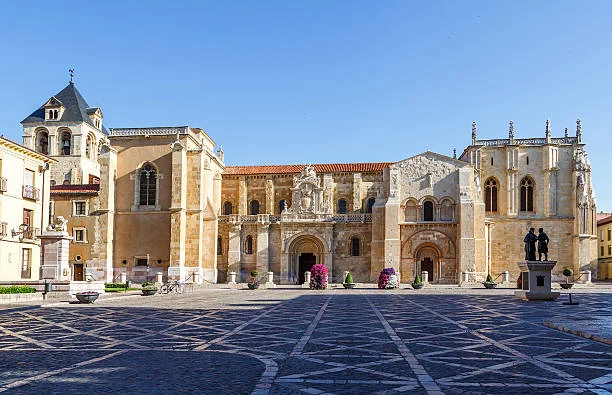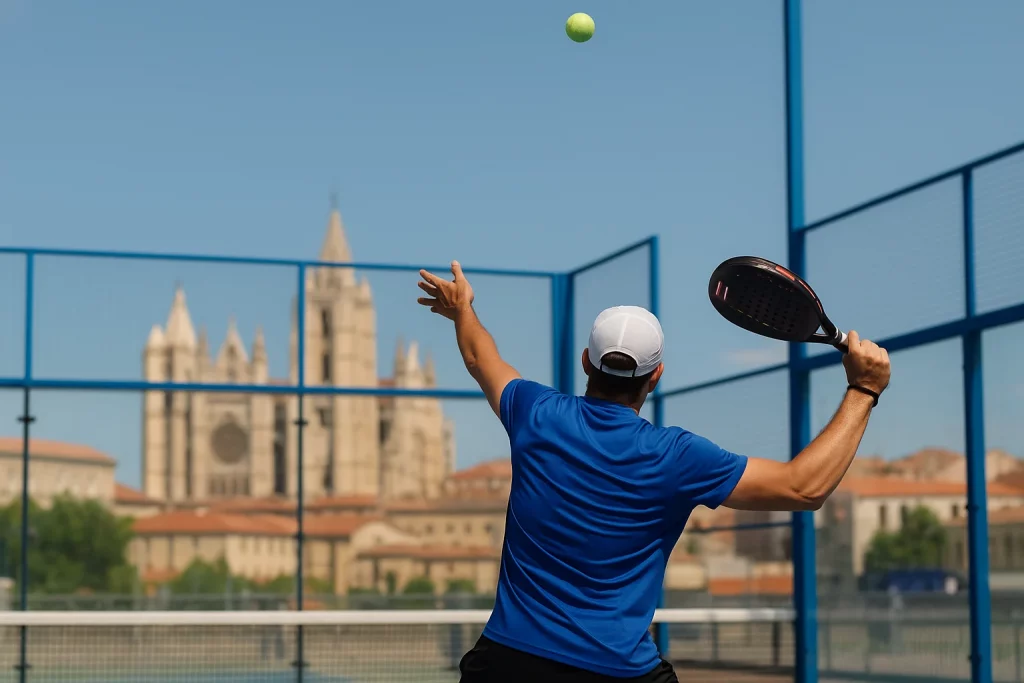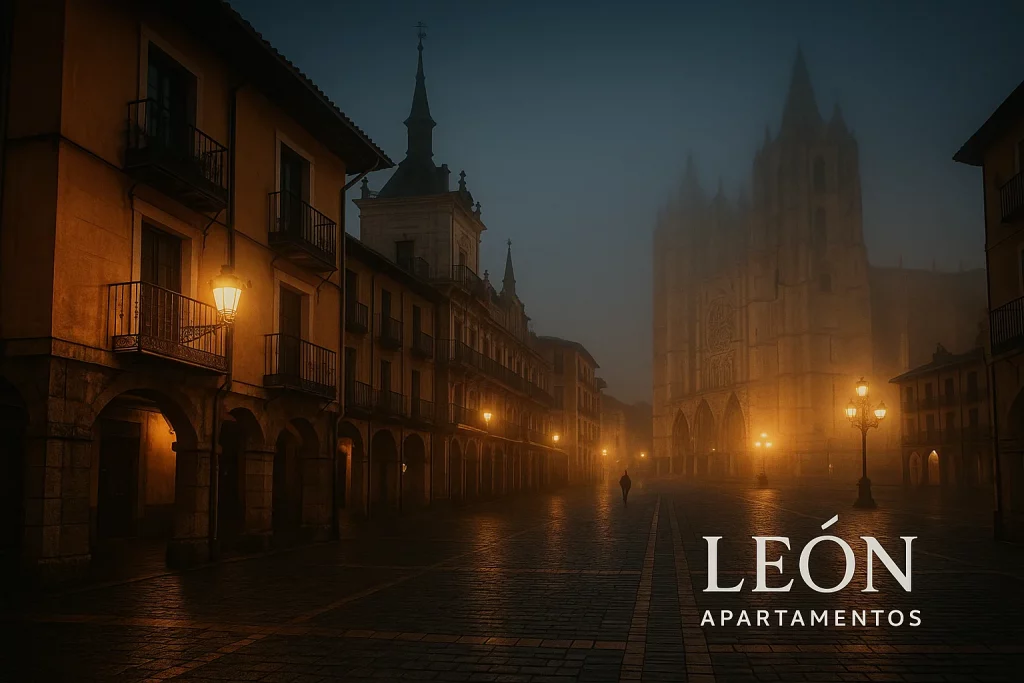The Basilica of San Isidoro in León is one of the city’s most important monuments and a true jewel of European Romanesque art. Located in the historic centre, next to León’s Roman and medieval walls, this basilica is an essential visit for anyone exploring León in search of history, art and spirituality.
San Isidoro is not just a church: it is a monumental complex that includes the basilica, the royal pantheon, the museum and the library. Inside are some of the most important Romanesque frescoes in the world, which is why it is often called the “Sistine Chapel of the Romanesque”.

Beyond its artistic and historical value, San Isidoro has also been, for centuries, a place of spiritual and political importance. Kings, nobles, pilgrims and scholars all passed through its halls, leaving behind a legacy that is still alive today.
For today’s visitor, walking through its rooms feels like travelling through time. From the Middle Ages to the present day, every corner tells part of the story of León and of Spain.
History of San Isidoro de León
The origins of San Isidoro go back to the 10th century, when a small monastery dedicated to San Pelayo was built. Later, in the 11th century, the Infanta Doña Urraca, daughter of Fernando I and Sancha, promoted the construction of a more ambitious Romanesque temple, which would be dedicated to Saint Isidore of Seville. His relics were transferred to León in the year 1063.
The arrival of these relics turned León into a spiritual and political centre of the first order on the Iberian Peninsula. The temple was enlarged and embellished over the centuries, becoming the majestic basilica we know today.
During the Middle Ages, San Isidoro became both a place of pilgrimage and the royal pantheon, which gave it even greater prestige. Its story is closely tied to the Kingdom of León, one of the most influential crowns in medieval Europe.
Even after the unification of the kingdoms and the passing of the centuries, the importance of San Isidoro never faded. It has remained one of the great religious and cultural landmarks of the Iberian Peninsula.
Architecture of the basilica
The monumental complex of San Isidoro is one of the finest examples of Romanesque architecture in Spain. Its basilical layout with three naves, semicircular apse and portal decorated with carved capitals reflects the influence of European art of the period.
Over the centuries, Gothic, Renaissance and Baroque elements were added, creating a richly layered whole. Highlights include the Puerta del Cordero (“Door of the Lamb”), with finely detailed Romanesque reliefs, and the Torre del Gallo, which crowns the main entrance.
Inside, the basilica impresses with its Romanesque austerity: solid semicircular arches and vaults that convey solemnity and quiet. At the same time, later additions enrich the space with touches from other artistic styles.
The combination of original Romanesque stonework and later additions makes San Isidoro a living example of how architecture can evolve without losing its essence.
The Royal Pantheon: the Sistine Chapel of the Romanesque
The Royal Pantheon of the Kings of León, located in the western part of the basilica, is one of the most valuable Romanesque spaces in Europe. Here lie the remains of the kings and queens of the Kingdom of León, making it an authentic royal mausoleum.
The most breathtaking feature is its 12th-century wall paintings, which depict biblical scenes such as the Childhood of Christ, the Passion and the Last Judgment. The vivid colours and expressive figures have made this space one of the great treasures of medieval European art.
What makes these frescoes extraordinary is not only their beauty, but also their state of preservation, exceptional for paintings that are more than eight centuries old. Many experts consider them the most complete example of Romanesque mural painting in Europe.
Visitors are often left in awe when they enter this space, where art, history and spirituality come together in a unique experience. It is no coincidence that it is known as the “Sistine Chapel of the Romanesque”.
The San Isidoro Museum
The complex also includes a museum that preserves pieces of immense historical and artistic value. Among its treasures:
- The Chalice of Doña Urraca, considered by some researchers to be the Holy Grail.
- Medieval manuscripts and illuminated codices.
- Precious metalwork and liturgical objects.
- Archaeological remains linked to the original monastery.
This museum makes the visit a complete experience, revealing the cultural and religious importance of San Isidoro over the centuries.
One of the most remarkable sections is the collection of codices, which confirms San Isidoro’s role as a centre of knowledge and learning. Among them is the Codex Biblicus Legionensis, a 10th-century manuscript of exceptional value.
The museum also preserves outstanding examples of medieval metalwork, reflecting both the artistic sophistication of the period and the importance of the monastery as a religious and cultural hub.
San Isidoro and the Camino de Santiago
For centuries, the basilica was a key stop for pilgrims on the Camino de Santiago as they passed through León. Travellers found here spiritual refuge, hospitality and the chance to venerate the saint’s relics.
Today it remains an essential stop for those walking the Way of St James, reinforcing León’s historic role on the Camino.
Because San Isidoro stands on the French route of the Camino de Santiago, thousands of pilgrims helped spread its fame across Europe, contributing to its international renown.
Today, in addition to being a place of prayer, it also offers guided visits adapted to pilgrims — a way to bring together devotion and historical interpretation in one experience.
Events and cultural life
The Basilica of San Isidoro is not only a monument; it is also a living space. Every year it hosts religious celebrations, guided tours and cultural events. Among them:
- Sacred music and classical music concerts.
- Talks and exhibitions on medieval history.
- Religious celebrations in honour of Saint Isidore.
This cultural role strengthens its importance beyond tourism.
In summer, the basilica also takes part in cycles of concerts and cultural activities organised by the city of León and local cultural associations. These events allow visitors to discover the monument in a different way.
In addition, academic conferences and seminars on medieval history are often held here, confirming San Isidoro’s role as a meeting point between culture and spirituality.
Practical information for visiting
- Location: Plaza de San Isidoro, next to León’s Roman walls.
- Opening hours: Generally open daily, with seasonal timetables.
- Tickets: Usually include access to the basilica, the Royal Pantheon and the museum.
- Guided tours: Available in several languages and highly recommended to understand the full artistic richness of the complex.
The basilica is also just a short walk from other key sights, such as León Cathedral and the Barrio Húmedo, so it’s easy to include it in a walking route through the historic centre.
It’s advisable to check the official website before visiting, as opening times may change due to religious services or cultural events.
Conclusion
The Basilica of San Isidoro in León is an essential visit for any traveller. Its Romanesque frescoes, its history linked to the medieval kings of León and its role on the Camino de Santiago make it a unique jewel in Europe.
Visiting San Isidoro means stepping into the essence of León: art, spirituality and culture in a place that continues to move every visitor.
It is also one of those monuments that you don’t just admire — you feel it. And it leaves a lasting impression.
📍 Your ideal base for visiting San Isidoro
If you’re coming to discover San Isidoro and León’s historic quarter, staying in the city centre is the best option. At León Apartamentos you’ll find fully equipped tourist apartments and suites just a few minutes from the basilica. Enjoy walking everywhere and being close to León’s main landmarks.
Book directly at leonapartamentos.com and experience León with total comfort.

